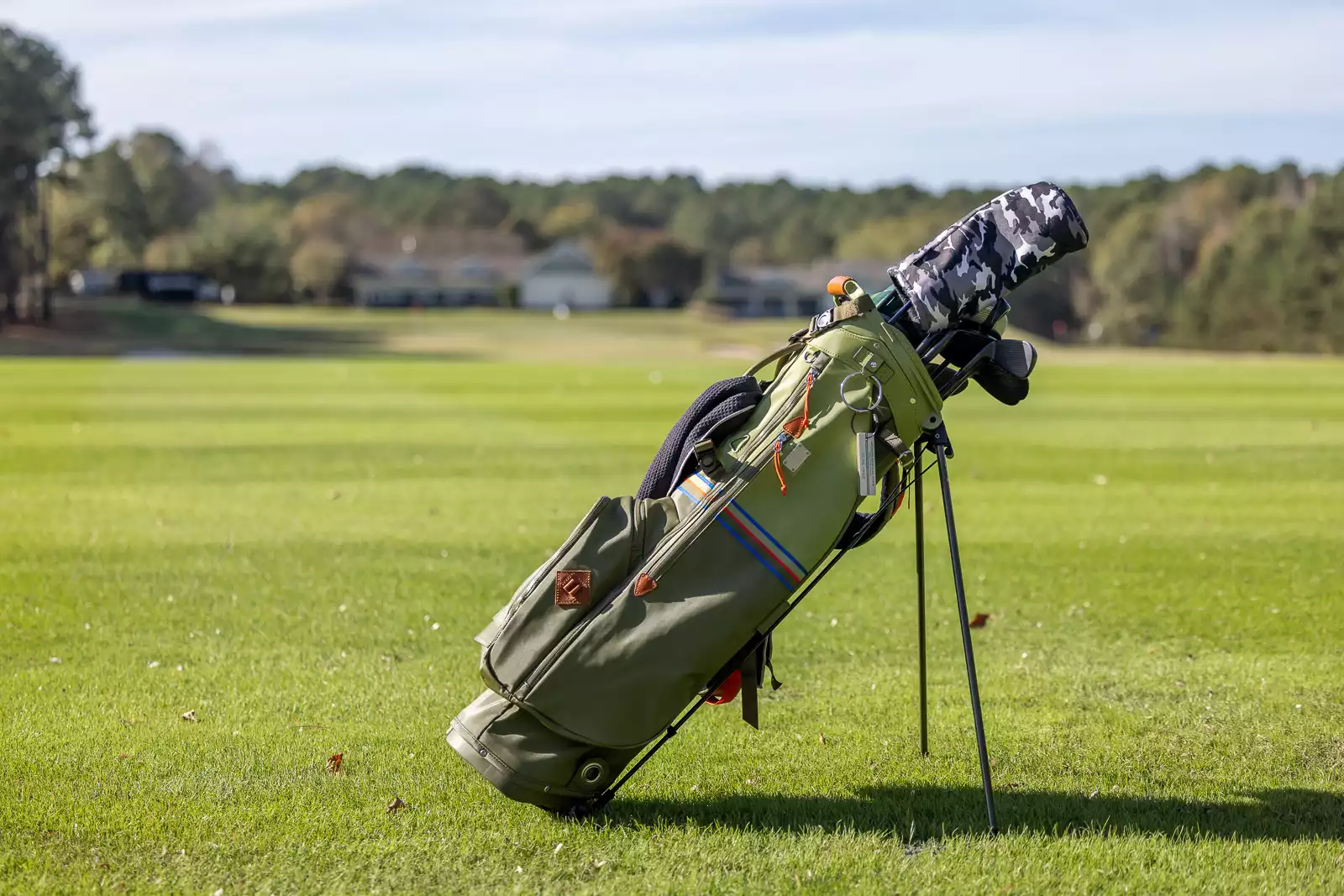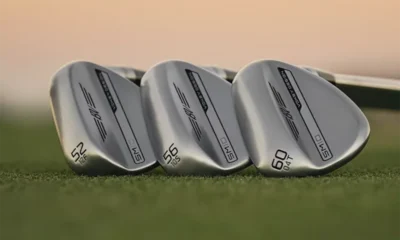-
-
by
Mark Perry
Golf is a sport with a rich history, dating back to 15th-century Scotland. Today, it remains a popular pastime for people of all ages and skill levels. When it comes to equipping yourself for the game, one of the most important decisions you’ll make is selecting the right number of clubs to carry in your golf bag.
In this article, we will discuss the various types of golf clubs, the recommended number of clubs to carry, and how to choose the perfect set for your game.
Understanding Golf Clubs
There are four main types of golf clubs: woods, irons, wedges, and putters. Each type is designed for specific shots and situations on the golf course. Let’s briefly discuss the role of each club type.
- Woods: Woods are used for long-distance shots, typically from the tee box. They have a large, rounded head and a long shaft, allowing for maximum swing speed and distance. The most common wood is the driver, which is used to hit the ball off the tee for maximum distance.
- Irons: Irons are versatile clubs used for a variety of shots on the fairway and around the green. They have a flat, angled face that helps to lift the ball into the air. Irons are numbered from 1 to 9, with a 1-iron having the least loft and a 9-iron having the most loft. However, it’s important to note that 1-irons and 2-irons are rarely used by amateur golfers due to their difficulty in striking the ball consistently.
- Wedges: Wedges are specialized irons designed for short approach shots, chips, and bunker play. They have a higher loft than regular irons and are particularly useful when the ball is close to the green. Common types of wedges include the pitching wedge (PW), sand wedge (SW), gap wedge (GW), and lob wedge (LW).
- Putters: Putters are used on the green to roll the ball into the hole. They have a flat face and are designed to provide precise control and accuracy.
The 14-Club Rule
According to the rules of golf, as outlined by the United States Golf Association (USGA) and the Royal and Ancient Golf Club of St. Andrews (R&A), golfers are allowed to carry a maximum of 14 clubs in their golf bag during a round. While there is no minimum number of clubs required, having a variety of clubs allows golfers to better adapt to different situations on the course.
Building Your Golf Bag
When selecting the ideal set of clubs for your golf bag, consider the following factors:
- Skill Level: Beginner golfers should start with a more basic set of clubs, focusing on the essentials: a driver, a few irons, a pitching wedge, and a putter. As your skill level improves, you can add more specialized clubs to your bag, such as fairway woods, additional wedges, and long irons or hybrids.
- Personal Preferences: Every golfer has unique preferences when it comes to their golf clubs. Some players prefer to have a full set of irons, while others may opt for a mix of irons and hybrids. Experiment with different clubs and configurations to determine which clubs work best for your game.
- Course Conditions: The type of golf course you play on can influence the clubs you need in your bag. For example, if you frequently play on courses with deep bunkers or thick rough, you may want to include a sand wedge or lob wedge for better control in these situations.
A Suggested Club Configuration
Selecting the right golf club configuration depends on your skill level, personal preferences, and the types of courses you play. However, there are some general guidelines that can help you build a well-rounded set of clubs. Here’s a suggested golf club configuration that caters to a wide range of golfers:
- Driver (1-Wood): The driver is essential for long-distance tee shots, and most golfers carry one in their bag. When choosing a driver, consider factors like loft, shaft flex, and clubhead size to find the one that suits your swing speed and skill level.
- Fairway Woods (3-Wood and 5-Wood): Fairway woods are versatile and can be used off the tee, from the fairway, or even from the rough in some cases. The 3-wood and 5-wood are common choices, as they provide a good balance between distance and control.
- Hybrids (3-Hybrid and 4-Hybrid): Hybrids combine the best features of woods and irons, making them easier to hit and more forgiving than long irons. Many golfers choose to replace their 3-iron and 4-iron with 3-hybrid and 4-hybrid clubs, respectively.
- Irons (5-Iron to 9-Iron): A standard set of irons usually includes the 5-iron through 9-iron. These clubs are used for a variety of shots on the fairway and around the green. As you progress in skill, you may consider adding a 4-iron to your set, but this is not essential for most golfers.
- Pitching Wedge (PW): The pitching wedge is a versatile club used for short approach shots, chips, and longer bunker shots. It is typically included in a standard set of irons.
- Gap Wedge (GW): The gap wedge fills the distance gap between the pitching wedge and sand wedge, allowing for more precise distance control on approach shots.
- Sand Wedge (SW): The sand wedge is designed for bunker play and shots from the rough. Its high loft and wide sole help to get the ball up and out of challenging lies.
- Lob Wedge (LW): The lob wedge is used for high, soft shots around the green, making it a valuable tool for tricky situations like short-sided chip shots or when you need to stop the ball quickly on the green.
- Putter: A putter is essential for every golfer, as it is used to roll the ball into the hole on the green. There are various types of putters available, such as blade, mallet, and perimeter-weighted designs. Choose a putter that feels comfortable and provides confidence in your putting stroke.
This suggested golf club configuration includes 12 clubs, which leaves room for two additional clubs based on your personal preferences and needs. You might consider adding another fairway wood, hybrid, or long iron, depending on your skill level and the courses you play.
While the maximum number of clubs allowed in a golf bag is 14, the ideal configuration will vary based on individual needs and preferences. By understanding the purpose of each club type and following the suggested club configuration above, you can create a well-rounded set that caters to your specific game.
Mark Perry: Editor-in-Chief of Golf News Nation Mark Perry, with 15 years in sports journalism, is the latest addition to Golf News Nation, bringing deep experience despite only starting golf in 2021. His fresh love for the game complements his expertise in sports analysis, offering a novel perspective to golf journalism. Even as a new golfer, Mark's dedication to providing insightful, factual, and engaging content is unwavering. He adeptly blends respect for golf's traditions with an understanding of its evolving aspects. At Golf News Nation, he's become instrumental in nurturing a community for golfers of all levels. Mark's passion for the sport and commitment to its community enriches his writing, ensuring a broad appeal to all golf enthusiasts. EMAIL: mark.perry@golfnewsnation.com Quote from Mark Perry "Despite my recent introduction to golf, my years in sports journalism allow me to blend a fresh enthusiasm with deep analytical insight, enriching the golfing narrative for enthusiasts at every level." ""










